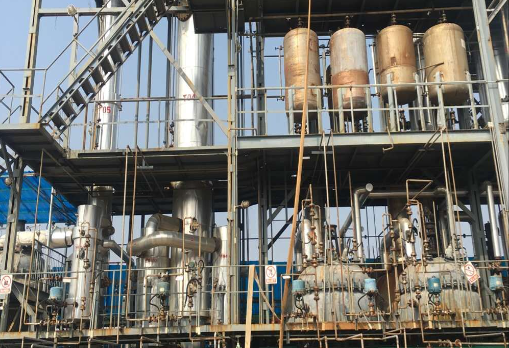Applications and Versatility of Methyl Acetate Plant
In the intricate world of chemical synthesis and industrial processes, the Methyl Acetate Plant emerges as a pivotal player, driving innovation, sustainability, and efficiency. This advanced facility stands as a testament to the evolution of chemical manufacturing, embodying the principles of green chemistry while fulfilling crucial industrial demands. This article delves into the realm of the Methyl Acetate Plant, shedding light on its significance, operations, and transformative impact on the chemical industry.

Unveiling Methyl Acetate: The Green Solvent
Methyl acetate, with its chemical formula CH3COOCH3, is an ester that holds the potential to revolutionize chemical processes due to its environmentally friendly properties. This clear, colorless liquid boasts a mild, fruity odor and finds utility as a solvent in various applications, including coatings, adhesives, inks, and specialty chemicals. What sets methyl acetate apart is its status as a green solvent, characterized by low toxicity, minimal environmental impact, and rapid biodegradability.
Green Chemistry and Sustainability
At the heart of the Methyl Acetate Plant lies a commitment to green chemistry principles, which prioritize the design of chemical processes that minimize environmental impact while maximizing efficiency and safety. Methyl acetate aligns perfectly with these principles, offering a safer alternative to conventional solvents that can pose health risks and contribute to pollution.
The production of methyl acetate within the plant exemplifies the adoption of sustainable practices. Its low toxicity and biodegradability ensure that its release into the environment has minimal adverse effects. Moreover, the synthesis process itself often utilizes advanced catalytic technologies that enhance reaction rates, reduce waste, and optimize resource utilization.
Applications and Versatility
The significance of the Methyl Acetate Plant extends to its diverse applications in multiple industries:
Coatings and Paints: Methyl acetate serves as a solvent in coatings and paints, facilitating uniform dispersion of pigments, dyes, and additives. Its rapid evaporation rate contributes to quick drying times and smooth finishes.
Adhesives and Sealants: Methyl acetate is utilized as a solvent in the formulation of adhesives and sealants, enabling the creation of strong bonds in a variety of applications.
Inks and Printing: In the printing industry, methyl acetate plays a role in the formulation of inks, ensuring proper viscosity and color dispersion.
Chemical Synthesis: Methyl acetate finds use as a reactant or solvent in the synthesis of various specialty chemicals, contributing to the creation of diverse products across industries.
Conclusion
The Methyl Acetate Plant represents a nexus of scientific ingenuity, sustainability, and industrial progress. Its role in producing a green solvent with diverse applications underscores its significance in modern chemistry and manufacturing. As industries continue to prioritize sustainability and seek greener alternatives, the Methyl Acetate Plant stands as a testament to the transformative potential of chemical innovation, propelling us toward a future where industrial excellence and environmental responsibility go hand in hand.
376
0
0

Comments
All Comments (0)